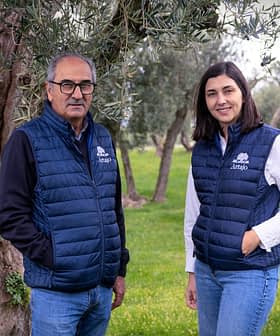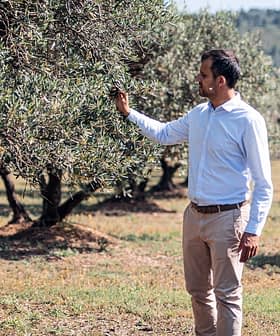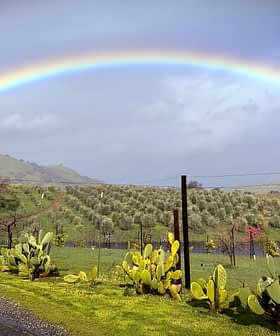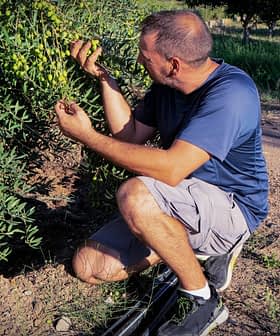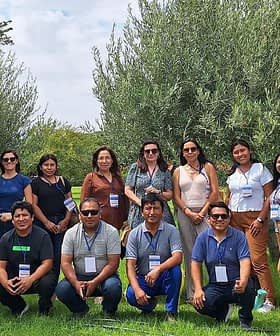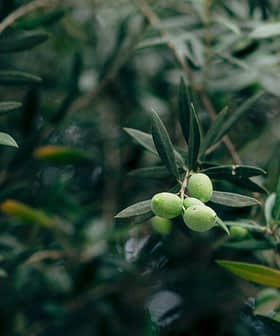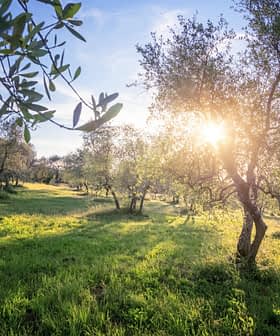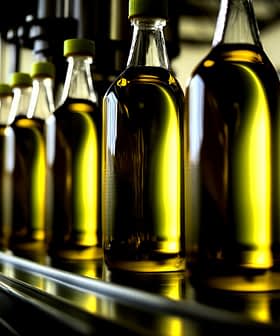Growers Prepare for Harvest in Northern Frontier of U.S. Olive Oil Production
Hobby growers and professional producers are optimistic about the upcoming harvest in Oregon.
 Milling olives at Durant Olive Mill in 2021. (Photo: Kelsey Chance, Good Chance Creative)
Milling olives at Durant Olive Mill in 2021. (Photo: Kelsey Chance, Good Chance Creative) Olive growing in Oregon is gaining popularity due to warmer and drier summers, but cold spells in winter pose a risk. The Durant Olive Mill in Dayton is a successful example of olive farming in Oregon, with state-of-the-art facilities and a focus on growing olives for oil production. Interest in growing olives in Oregon is high, with research being conducted by Oregon State University’s Olea project to determine the best varieties for the state’s climate conditions.
Olive growing in Oregon is often called the new frontier. Frontier farming is typically known for both pitfalls and promises.
“Oregon trees are faring well this summer,” Heather Stoven, from Oregon State University’s agricultural extension service, told Olive Oil Times. “Established olives in Oregon can tolerate the heat and dry summer conditions without protective measures. Young trees, however, do need supplemental water during the summer.”
Oregon’s harvest is looking promising. At this point in the season, the trees have bloomed, and fruit is on its way. Olive growers should continue to monitor plant health and nutrition.
“Interest in growing olives in Oregon has been strong due to the warmer and drier summers we have been experiencing – especially for those who have water availability issues,” she added. “The crop is well suited for increased heat and drought.”
Stoven explained that cold spells in winter are the most significant risk to growing olives in Oregon. Even with hot, dry summers, if the trees experience extensive damage during the previous winter, they will not produce well.
See Also:2023 Harvest UpdatesInterested producers must evaluate areas to find a favorable site and microclimate to grow olives in Oregon.
“My parents started the vineyard operation and really are entrepreneurs,” Paul Durant, co-owner and founder of Durant Olive Mill in Dayton, told Oregon Public Broadcasting. “We became passionate about olive trees and planted a few thousand trees around 2004/05.”
Since then, “we felt like we were having a lot of success and went even bigger and built a mill,” Durant said.
“After a series of tough setbacks and hard winter conditions plus a big freeze in 2013, we were forced to rethink and re-look at what are the good varieties for Oregon,” he added.
The Durant Olive Mill is state-of-the-art. The olive harvest and milling occur each autumn with a blend of olives from Durant’s Oregon groves and carefully-sourced olives from select growers in Northern California.
According to Stoven, the exact number of growers in Oregon is approximately less than 50, most of whom grow olives for oil production. Most of the state’s olive growers are located in the Willamette Valley, with a few in Southern Oregon.
However, interest is high in Oregon State University’s Olea project, which is studying which olive trees are best suited to thrive in Oregon’s climate conditions. The Olea project was established to research and evaluate best practices for table and oil-producing olives in Oregon.
Challenges for olive farmers in Oregon are not limited to weather and climate change. Stoven noted that the emerald ash borer is a pest that has been recently discovered in Oregon. “This pest has the ability to damage olive trees. However, at this time, we are unsure exactly how severely olives will be affected,” she said.
In June 2022, state officials in Oregon confirmed the discovery of an emerald ash borer, an exotic beetle that infests ash trees, in Forest Grove, just west of Portland. This marked the first confirmation of the invasive pest on the United States West Coast.
Oregon provides an online hotline to enable residents and visitors to report a potential invasive species. The public can use this form to help identify this potentially dangerous pest to invasive species experts.
According to Entomology Today, the olive tree is the second non-ash species found to be vulnerable to emerald ash borer. In a detailed study from Wright State University, the emerald ash borer can develop from larvae to adulthood on a species of olive trees.
“If emerald ash borer can detect and utilize olive trees in the field, it would take it from being primarily a forest and landscape pest to a potential crop tree pest,” Don Cipollini, a professor of plant physiology and chemical ecology at Wright State and lead author of the study, told Entomology Today.
Hobby growers and professional producers are optimistic about the upcoming harvest. “Oregon’s harvest is looking promising,” Stoven said. “At this point in the season, the trees have bloomed, and fruit is on its way. Olive growers should continue to monitor plant health and nutrition.”
Olive tree irrigation, fertilization and monitoring remains a key issue. In addition, producers need to develop a plan for attracting farm workers, as olive harvesting in Oregon depends on proper hand-picking.
“Machine harvesting in Oregon, given the wet conditions that we’re picking in, is probably never going to happen, certainly in my lifetime,” Durant said.
Stoven agreed: “Labor for harvest can be an issue; therefore, developing a harvest plan is an important step before the end of the season.”
“Olives are a small niche crop in the state, producing a high-quality oil which is sought by those looking for locally produced specialty foods,” Stoven said. “We will not compete with California, for example, due to our climate limitations.”
Most of the olives in Oregon are grown in the Willamette Valley. This valley is well-known for its temperate climate, making it a prime wine-producing region.
According to Oregon Wine, the Willamette Valley is Oregon’s oldest wine region, with two-thirds of the state’s wineries and vineyards. It is home to more than 700 wineries, and its Pinot Noir is legendary. The valley is about 240 kilometers long, framed by the Coast Range to the west and the Cascade Mountains to the east.
“Cool winter temperatures in Oregon limit olives to areas west of the Cascade Mountains,” Stoven said. “Areas of southern and eastern Oregon can have hotter summers than the Willamette Valley (where most of the olives are grown).”
“However, most of these areas are colder in the winter and therefore not able to grow olives,” she added. “There are a few areas of southern Oregon where olives are grown, but not all areas are suitable.”
Share this article


